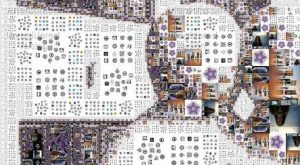How Social Media Reinforces Eating Disorders
 It’s not hard to find pro-anorexia and bulimia websites, Facebook pages, and Twitter accounts. While some of these sites are helpful communities for people looking to recover, many support the disease and encourage visitors to work even harder to be thin. Hospital admissions for eating disorders rose by 16% in the past year alone, and many researchers are blaming social media for the rise.
It’s not hard to find pro-anorexia and bulimia websites, Facebook pages, and Twitter accounts. While some of these sites are helpful communities for people looking to recover, many support the disease and encourage visitors to work even harder to be thin. Hospital admissions for eating disorders rose by 16% in the past year alone, and many researchers are blaming social media for the rise.
While anorexia is primarily a mental disorder and not entirely affected by the media, it can certainly be promoted through other sufferers. Girls look at websites like Tumblr and Pinterest for so-called “thinspiration” images and are bombarded with photos of extremely thin girls claiming to be “too fat” or who are striving to be medically ill. Some girls run Twitter accounts and attack one another for being too large, and other users praise them for losing more weight.
Research has shown that eating disorders can be transmitted “like a virus” through social media via tips, advice, and online communities of girls seeking to continue their disorders rather than seek treatment.
Taking a stand
Some sites have taken a stand against these users. Pinterest has changed the search options so that when users look up “thinspiration” or “pro-ana,” they are shown this warning:
“Eating disorders are not lifestyle choices, they are mental disorders that if left untreated can cause serious health problems or could even be life-threatening.”
With social media comes a lot of image sharing and striving for comments. Facebook users constantly post photos of themselves, hoping for positive feedback. Some girls post photos of themselves as clearly emaciated, hoping for comments like “you need to eat more!” and “you’re so skinny” as evidence that their efforts are “paying off.”
Could social media trigger eating disorders in girls who are mentally healthy?
Some scientists don’t think so. At most, these sites are causing girls with real disorders to stay sick and not seek treatment. “Genetics, brain chemistry, brain structure, and the role of hormones are all in the mix,” said Susan Ringwood, CEO of the eating disorder charity, Beat.
Biology is the real basis of eating disorders. Ringwood described it as “biology that loads the gun, culture pulls the trigger.”
Social media reinforces existing disorders but should not cause more cases. Young girls who are mentally healthy and not prone to self-harm should be able to view these images and think rationally about how unhealthy these girls are; whereas girls prone to disorders will react much differently.
Doctors like Ringwood believe a long-term goal is to “nourish a generation of young people equipped to be resilient to these pressures and critical of the society that promoted them.” This can be done through education and early intervention, and providing healthy alternatives to the support many youths seek in social media.
“Kids need to feel good about themselves again. It’s as simple as that. Parents and teachers need to wake up and realize that the most basic human need, for safety and security is rapidly being eroded.”
 Eating Disorder Self Test. Take the EAT-26 self test to see if you might have eating disorder symptoms that might require professional evaluation. All answers are confidential.
Eating Disorder Self Test. Take the EAT-26 self test to see if you might have eating disorder symptoms that might require professional evaluation. All answers are confidential.